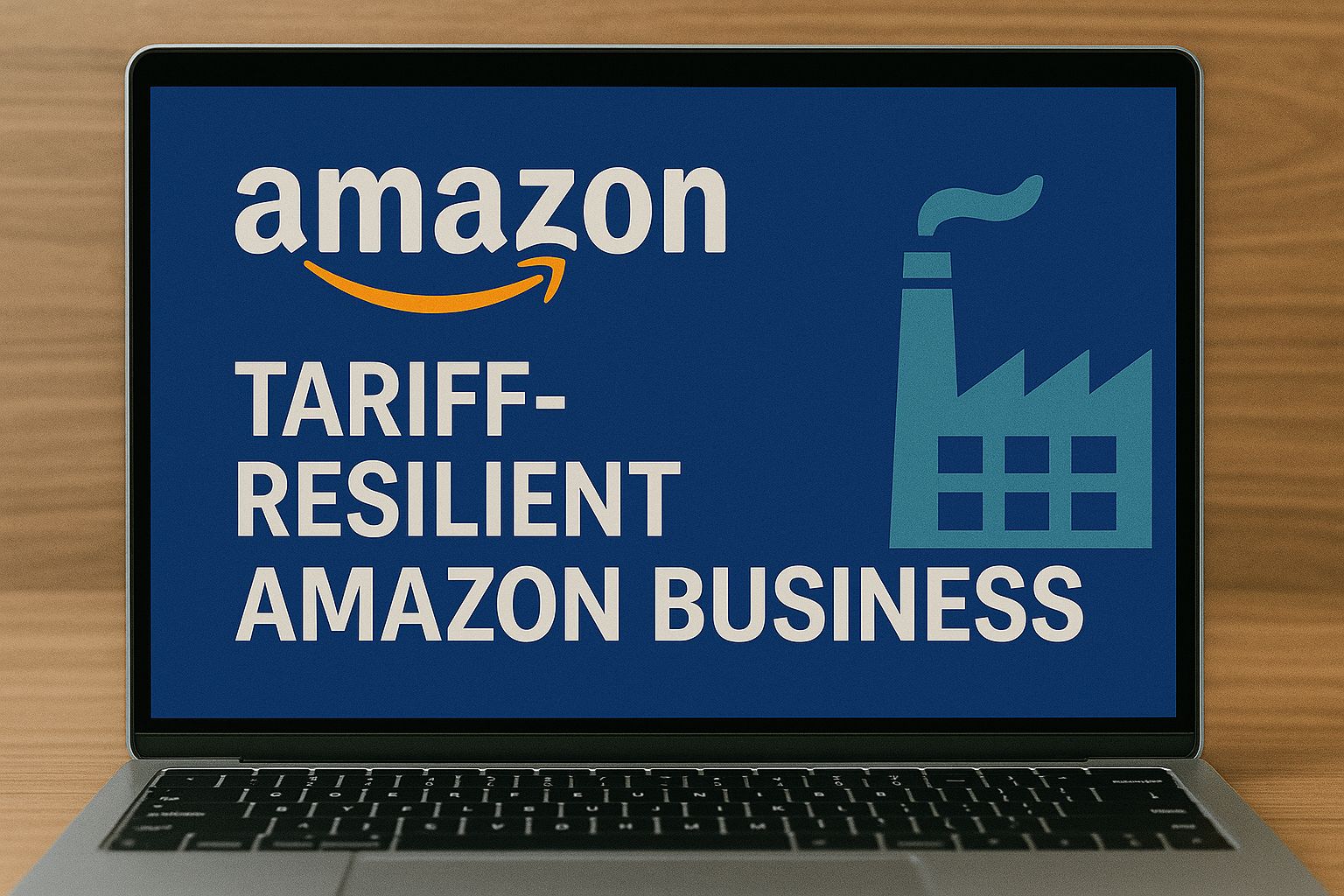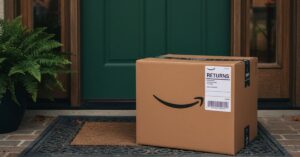
Sellers rethink sourcing, price increase, and logistics to protect a tariff-resilient Amazon business amid sweeping U.S. trade policy changes.
Amazon’s third-party sellers now account for 62% of all units sold, making them a vital part of the platform’s ecosystem.
However, the recent implementation of steep tariffs has disrupted supply chains and increased costs, putting pressure on sellers to either absorb the costs or pass them on to consumers.
In response to tariff challenges, sellers are developing tariff-resilient Amazon businesses by exploring alternative sourcing options and adjusting their pricing strategies to maintain competitiveness.
Amazon seeks seller input on tariff landscape impact
Amazon is reaching out directly to its third-party sellers to assess the toll new U.S. tariffs are taking on their businesses, according to a CNBC report. The company is seeking insight on how tariff changes are impacting seller strategies for sourcing, pricing, logistics, and fulfillment.
The initiative, led by Amazon’s seller relations team, includes a detailed questionnaire asking merchants to share how the current U.S. tariff situation is affecting their operations. These sellers represent over 60% of the products sold on Amazon’s marketplace.
Key points from Amazon’s outreach:
Sellers on Amazon are being asked how tariffs are impacting:
Sourcing and pricing strategies
Logistics and shipping plans into FBA warehouses
Overall inventory and fulfillment decisions
Amazon emphasized that it is still managing the ripple effects of evolving tariff policies as of April 2025.
The outreach coincides with significant shifts in trade policy. President Trump recently adjusted tariff plans, imposing a universal 10% rate on all trade partners, except China, which now faces a sharply increased 145% tariff. These hikes also include levies related to fentanyl control announced earlier in the year.
Speaking with CNBC, Amazon CEO Andy Jassy suggested that sellers might have to pass tariff-related expenses onto buyers, explaining that their profit margins are generally not large enough to accommodate these additional costs.
Some sellers told CNBC they’re holding prices steady for now to stay competitive, but warned that sustained tariffs could make their businesses unsustainable.
The impact is being felt beyond third-party sellers. Consultants reported that Amazon recently began canceling direct import orders from vendors in China, even for goods already prepared for shipment. Home goods and kitchenware suppliers were among those affected.
Seeking a tariff-resilient Amazon business model with a risky profitability
As tariffs on Chinese imports spike to 145%, some Chinese manufacturers are offering U.S.-based Amazon sellers risky alternatives to avoid rising duty costs. Fortune reports that these solutions, while appealing to sellers facing tighter margins, may violate U.S. customs law.
Multiple suppliers contacted a midsize U.S. household-goods brand via email and WeChat, proposing questionable tactics:
Under-declaring product value to reduce tariffs
Revising commercial invoices to reflect lower-than-actual values
Using Delivery Duty Paid (DDP) shipping, which distances the U.S. seller from the declaration process and transfers liability to the supplier
Several Chinese suppliers reportedly suggested to U.S. Amazon sellers the possibility of using lower value invoices for customs clearance to reduce tariffs. Additionally, another supplier offered to revise the declared value on commercial invoices as a means to help lower duty costs.
These proposals have raised red flags among brand owners. The founder of the household-goods brand, who spoke anonymously, expressed concern that smaller Amazon sellers may unknowingly fall into legal jeopardy. “
The push for illegal tactics comes at a time of widespread instability. While President Trump recently scaled back some tariffs globally, China remains the exception, with the highest tariff rate applied to nearly all imports. This has forced sellers to consider long-term changes, including:
Slight reductions in wholesale offered by suppliers
Exploring manufacturing in alternative countries with lower tariffs
Many U.S. Amazon sellers have long suspected that some China-based competitors are undervaluing shipments. This week, the issue became more public after a Chinese consultant claimed in a widely circulated post that “the declared value of goods in a typical container from China to the U.S. usually ranges from $5,000 to $10,000.”
U.S. sellers say the declared values being reported are far too low to reflect the true cost of high-value imports, particularly in categories like home and garden. They warn that the lack of enforcement on customs fraud gives China-based competitors a significant pricing advantage under the new tariff landscape.
Relying on risky workarounds to build a tariff-resilient Amazon business can backfire, exposing sellers to legal and financial trouble. For long-term success, leverage on finding legitimate, sustainable alternatives, not shortcuts.
Strategic practices for building a tariff-resilient Amazon business
A Shopify article shared an actionable insights playbook that Amazon sellers can also benefit from.
As tariffs continue to reshape global ecommerce, creating a tariff-resilient Amazon business requires careful planning and responsible sourcing. Sellers who prepare now are more likely to withstand market fluctuations in 2025 and beyond.
Key strategies include:
Optimize Duties Collection
Tariffs force sellers to make difficult pricing decisions. While some absorb the added cost, others pass it on to customers. Either way, clear communication is essential to maintain trust and a strong customer experience.
Diversify Suppliers
Zignify"Companies are compelled to reassess and potentially restructure their supply chains to mitigate the impact of increased import costs."
Expanding your supplier base to countries with better trade terms reduces the risk of sudden cost increases and helps stabilize your supply chain. Sellers can research sourcing apps and directories to identify new supplier options outside of China.
Start sourcing quotes and samples from alternative countries, but avoid shifting operations hastily. Rushed decisions may lead to greater losses as trade policies shift day by day.
Use Local 3PL Providers
Partnering with third-party logistics companies in key international markets helps in surviving the tariff impact. Duties are based on the cost of goods, not retail price, leading to better profit protection.
Local fulfillment also means faster shipping, reduced delivery expenses, and simpler return processes for buyers in each region.
Act with caution for a tariff-resilient Amazon business
As tariff-related uncertainty escalates, sellers are urged to act with caution. Steven Pope, founder of our Amazon agency, advises restraint: “Ordering fewer units, exploring suppliers in other countries, and avoiding quick decisions can help sellers avoid costly missteps.”
Delay Large Orders
Instead of committing to large production runs, sellers are encouraged to scale down, ordering 1,000 units instead of 5,000 while waiting for more clarity.
- Be Aware of Legal Uncertainty
On the legal front, a Forbes article reported that California is challenging the federal government’s tariff authority. Governor Gavin Newsom and Attorney General Rob Bonta announced a lawsuit against former President Trump’s tariff actions, arguing they pose “immediate and irreparable harm” to the state’s economy.
The suit claims Trump overstepped his authority under the International Emergency Economic Powers Act (IEEPA), which critics argue does not legally justify tariffs.
This is the first state-led legal challenge to the sweeping tariffs and follows other lawsuits from business groups. These developments signal how unstable the tariff landscape remains in 2025, making a tariff-resilient Amazon business not just a competitive advantage, but a necessity for survival.






